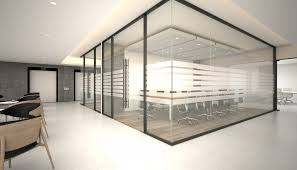Designing Privacy: The Art of Effective Office Partitions
 Designing Privacy: The Art of Effective Office Partitions
Designing Privacy: The Art of Effective Office Partitions
In present day fast-paced company landscape, the dynamics of workspace design are evolving. As corporations attempt to stability collaboration with privateness, workplace walls have emerged as a vital element in growing effective work environments. This article explores the artwork of designing office partitions, emphasizing their role in enhancing privacy at the same time as fostering productiveness and properly-being.
Office Partition
As workplaces turn out to be more open and collaborative, the need for privateness has won significance. Studies have shown that steady exposure to noise and visual distractions can preclude concentration and productivity office partition. Employees often require spaces wherein they are able to consciousness, keep private discussions, or certainly take a moment to recharge. Effective office walls can cope with those needs, creating environments that appreciate character privacy without sacrificing collaboration.
Understanding Different Types of Office Partitions
When thinking about workplace partitions, it is important to apprehend the various sorts available. Each kind serves a specific purpose and may be designed to meet exceptional privateness desires.
Fixed Partitions
Fixed walls are everlasting systems that divide areas. They can be made from materials like drywall, glass, or even wooden, supplying varying tiers of soundproofing and visual separation. These walls are best for developing committed places of work or convention rooms, imparting personnel with private areas for targeted work or private conferences.
Read Also: Glass and Glazing Business Plan in Nigeria
Movable Partitions
Movable walls, additionally called operable walls, provide flexibility in workplace design. These walls can be reconfigured to evolve to changing desires, allowing spaces to be opened up for collaboration or closed off for privateness. This versatility is especially beneficial in dynamic paintings environments wherein teams often shift and challenge requirements evolve.
Acoustic Partitions
Acoustic walls are designed especially to reduce noise transmission among spaces. They can be utilized in both constant and movable paperwork, supporting to create quiet zones for employees who require distraction-unfastened surroundings. The effectiveness of acoustic partitions often hinges on their cloth composition and thickness, which ought to be cautiously decided on primarily based on the workplace’s sound necessities.
Glass Partitions
Glass walls provide a cutting-edge aesthetic while retaining an open sense. They permit natural light to glide at some stage in the workspace, promoting a feel of openness and connection. However, frosted or tinted glass alternatives can decorate privateness, taking into consideration visible separation without sacrificing the benefits of light and area. Glass partitions can be in particular powerful in environments where collaboration and privacy need to coexist.
Office Cabinet
When designing office walls, numerous key factors need to be taken into consideration to ensure they meet the privateness desires of personnel whilst fostering efficient paintings surroundings.
Purpose and Functionality
Understanding the motive of each partition is vital office cabinet. Will it be used for personal meetings, targeted work, or collaborative initiatives? By in reality defining the characteristic, designers can choose suitable materials, patterns, and layouts that enhance the intended use of the distance.
Material Selection
The desire of substances performs a vast role inside the effectiveness of workplace partitions. For example, sound-soaking up materials are vital in developing quiet environments, whilst transparent materials can keep an open sense. Designers must keep in mind a balance between aesthetic appeal and functionality, making sure that the materials selected help the overall design goals.
Flexible Layouts
In nowadays rapidly converting paintings environments, flexibility is prime. Movable or modular partitions can accommodate evolving group dynamics and challenge requirements. Designers must contain adaptable layouts that allow for short reconfiguration, ensuring that privateness and collaboration can be without problems controlled.
Aesthetic Integration
Office walls should complement the overall layout of the workspace. Colour schemes, textures, and styles should align with the organisation’s emblem identification and the supposed environment of the workplace. An aesthetically fascinating environment can beautify employee pleasure and productiveness.
Employee Involvement
Involving personnel inside the layout process can result in extra effective answers. Gathering remarks on privateness needs and preferences can assist designers create areas that simply cater to the group of workers’ requirements. This involvement fosters a feel of possession and might result in higher ranges of delight and productiveness.
Office Cubicle
As faraway work maintains to form office dynamics, the layout of office walls can even evolve. Hybrid work models may additionally require walls that are not best effective in physical spaces however additionally adaptable for virtual interactions office cubicle. Innovations inclusive of virtual displays integrated into walls should allow seamless verbal exchange among in-office and far off workers, enhancing collaboration while preserving privateness.
Conclusion
Designing powerful office walls is an artwork that balances privacy with collaboration. By understanding the specific sorts of partitions available and thinking about key design elements, organizations can create spaces that promote productivity, properly-being, and a feel of network. As the character of work maintains to change, so too will the techniques for creating environments that respect man or woman privacy while fostering teamwork. Investing in considerate partition layout isn’t always just about aesthetics; it’s approximately growing a workspace wherein employees can thrive.
Related